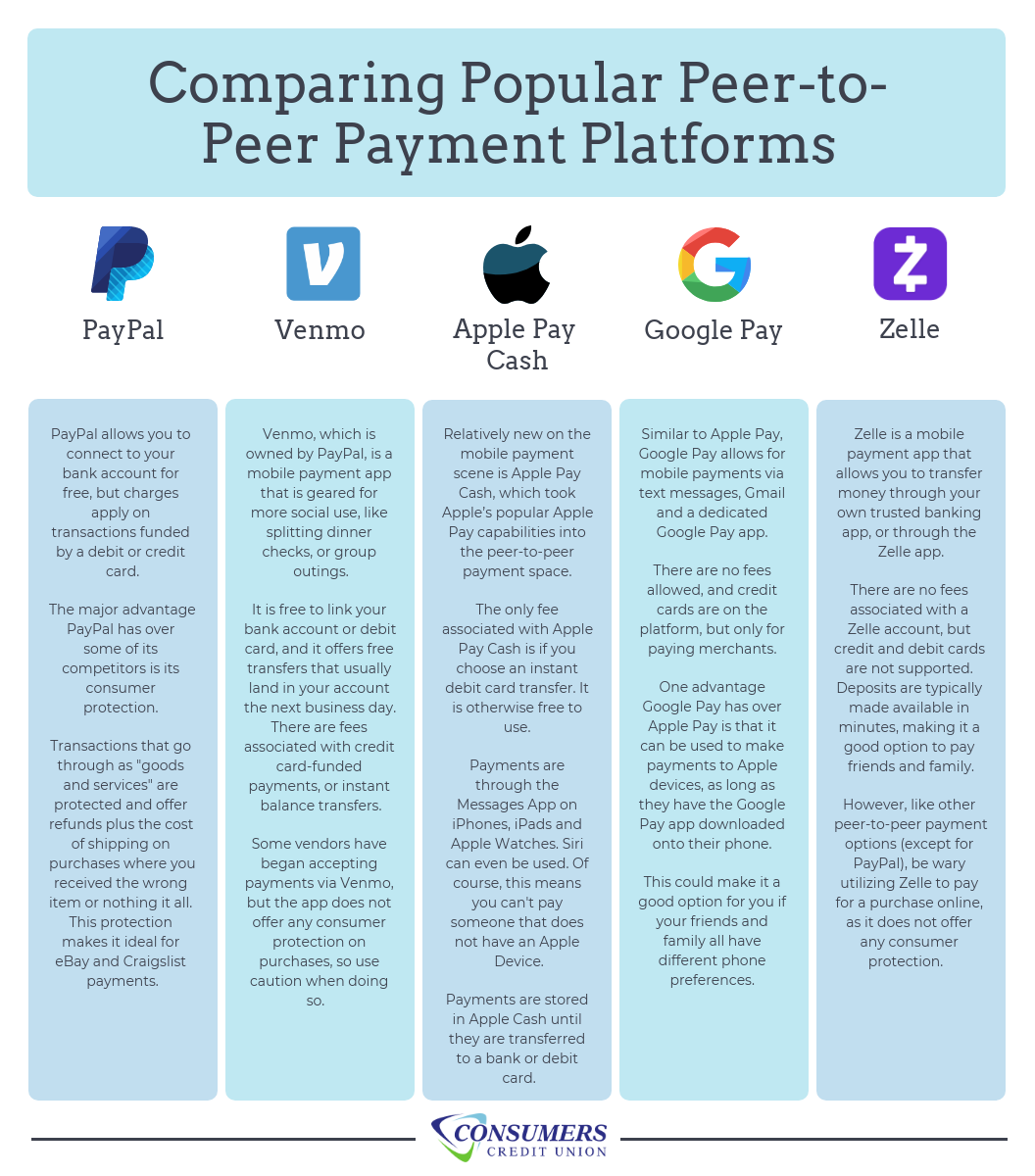What to Know About Peer-To-Peer Payment Apps
Gone are the days of writing checks or handing over cash to pay back your friends after splitting dinner or going on a group trip. Nowadays, peer-to-peer payment apps are becoming more commonplace, thanks to the convenience of making transactions through smartphone applications.
In this blog, we will go over some of the most popular payment apps, their advantages, and their disadvantages.
PayPal
One of the more established peer-to-peer platforms is PayPal. PayPal allows you to connect your bank account for free. However, they do charge 2.9% on transactions funded by a debit or credit card.
The major advantage PayPal has over some of its competitors is its consumer protection. If you are just paying your roommate back for rent, it's safe to assume you can make that transfer as a "friends and family" payment.
However, if you choose to use your PayPal account to make a purchase through eBay or Craiglist, processing the payment as "goods and services" guarantees you a refund plus the cost of shipping if you are sent the wrong item or nothing at all.
Venmo
Venmo, which is owned by PayPal, is a mobile payment app that is geared for more social use, like splitting dinner checks, or group outings.
It is free to link your bank account or debit card, and offers free transfers that usually land in your account the next business day. There are some fees associated with Venmo if you choose to link your credit card, or fund payments with a credit card.
Payments are deposited into your Venmo balance, which can either be transferred to a linked bank account, or use for future Venmo payments.
Some vendors have begun accepting payments via Venmo, but the app does not offer any consumer protection on purchases, so use caution when doing so.
Apple Pay Cash
Relatively new on the mobile payment scene is Apple Pay Cash, which took Apple's popular Apple Pay capabilities into the peer-to-peer payment space.
The only fee associated with Apple Pay Cash is if you choose an instant debit card transfer. It is otherwise free to use. Credit cards are not on the platform yet.
Apple Pay Cash allows Apple device users to make payments in the Messages app on iPhones, iPads, and even Apple Watches or Siri. Payments are kept in Apple Cash, until they are transferred to a bank account or debit card.
Of course, the downside is that this method of payment only works between Apple devices, so payments can't be made to devices outside of the Apple ecosystem.
Google Pay
Similar to Apple Pay, Google Pay allows for mobile payments via text messages, Gmail and a dedicated Google Pay app.
There are no fees associated, and credit cards are on the platform, but only for paying merchants.
One advantage Google Pay has over Apple Pay is that it can be used to make payments to Apple devices as long as they have the Google Pay app downloaded onto their phone. This could make it a good option for you if your friends and family all have different phone preferences.
Zelle®
Zelle® is a mobile payment app that allows you to transfer money through your own trusted banking app or through the Zelle® app.
There are no fees associated with a Zelle® account, but credit and debit cards are not supported. Deposits are typical made available in minutes, making it a good option to pay friends and family.
However, like other peer-to-peer payment options (except for PayPal), be wary of utilizing Zelle® to pay for a purchase online, as it does not offer any consumer protection.



 ;
;